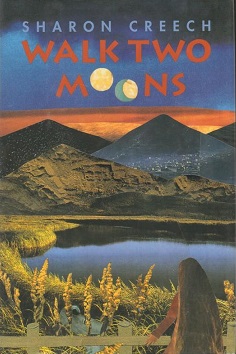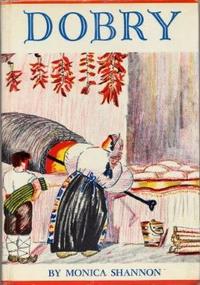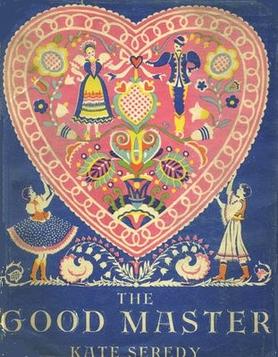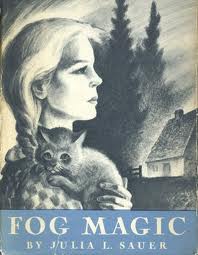
Moscow is a city and the county seat of Latah County, Idaho. Located in the North Central region of the state along the border with Washington, it had a population of 25,435 at the 2020 census. Moscow is the home of the University of Idaho, the state's land-grant institution and primary research university.
This article contains information about the literary events and publications of 1936.

Menomonie is a city in and the county seat of Dunn County in the western part of the U.S. state of Wisconsin. The city's population was 16,843 as of the 2020 census.

Carol Ryrie Brink was an American writer of over thirty juvenile and adult books. Her novel Caddie Woodlawn won the 1936 Newbery Medal and a Lewis Carroll Shelf Award in 1958.

Walk Two Moons is a novel written by Sharon Creech, published by HarperCollins in 1994 and winner of the 1995 Newbery Medal. The novel was originally intended as a follow-up to Creech's previous novel Absolutely Normal Chaos; but, the idea was changed after she began writing it.

Kate Seredy was an American writer and illustrator of children's books. She won the Newbery Medal once, the Newbery Honor twice, the Caldecott Honor once, and the Lewis Carroll Shelf Award. Most of her books were written in English, which was not her first language. Seredy seems to be unknown in her native Hungary, despite the fact that her story of the Good Master, and the sequel set in World War I are intensely about Hungary.
Trina Schart Hyman was an American illustrator of children's books. She illustrated over 150 books, including fairy tales and Arthurian legends. She won the 1985 Caldecott Medal for U.S. picture book illustration, recognizing Saint George and the Dragon, retold by Margaret Hodges.

Circuit riders were clergy assigned to travel around specific geographic territories to minister to settlers and organize congregations. Circuit riders were clergy in the Methodist Episcopal Church and related denominations, although similar itinerant preachers could be found in other faiths as well, particularly among minority faith groups. They were most prominent during the early years of the United States, from 1784–1830, and were part of the Second Great Awakening revival movement.

Dobry is a book by Monica Shannon first published in 1934 that won the Newbery Medal for most distinguished contribution to American literature for children in 1935. Bulgarian-born sculptor Atanas Katchamakoff illustrated the book.
Jean Guttery Fritz was an American children's writer best known for American biography and history. She won the Children's Legacy Literature Award for her career contribution to American children's literature in 1986. She turned 100 in November 2015 and died in May 2017 at the age of 101.

Adam of the Road is a novel by Elizabeth Janet Gray Vining. Vining won the Newbery Medal for excellence in American children's literature in 1943 from the book. Set in thirteenth-century England, the book follows the adventures of a young boy, Adam. After losing his spaniel and minstrel father, Adam embarks on a series of escapades throughout medieval England. The book is illustrated by Robert Lawson.

Elizabeth Wright Enright Gillham was an American writer of children's books, an illustrator, writer of short stories for adults, literary critic and teacher of creative writing. Perhaps best known as the Newbery Medal-winning author of Thimble Summer (1938) and the Newbery runner-up Gone-Away Lake (1957), she also wrote the popular Melendy quartet. A Newbery Medal laureate and a multiple winner of the O. Henry Award, her short stories and articles for adults appeared in many popular magazines and have been reprinted in anthologies and textbooks.

The Good Master (1935) is a children's novel written and illustrated by Kate Seredy. It was named a Newbery Honor book in 1936. The Good Master is set in the Hungarian countryside before World War I and tells the story of wild young Kate, who goes to live with her Uncle's family when her father can't control her and at the end she goes back to her father. At Uncle Marton's suggestion, Kate and her father move back to the country to live, to be near Marton and his wife and son. Like his brother Marton, Kate's father Sandor is a countryman and misses rural life. And he sees what a wonderful effect country life has had on Kate.

Magical Melons is a children's historical novel by Carol Ryrie Brink, first published in 1939. It is the sequel to the Newbery-Award-winning novel Caddie Woodlawn.
Archie Phinney was a Nez Perce Indian and an anthropologist.

Calico Bush is a children's historical novel by Newbery-award-winning author Rachel Field. Considered by some to be her best novel, it was first published in 1931 and received a Newbery Honor award.

Fog Magic by Julia L. Sauer is a children's fantasy novel set in Nova Scotia. It was a Newbery Honor recipient in 1944. Fog Magic tells the story of a young girl who, on foggy days, travels back in time to enter the past life of an abandoned village. Lynd Ward illustrated the book, which was published by Viking.

Caddie Woodlawn a Musical Drama is a musical based on the novel Caddie Woodlawn by Carol Ryrie Brink. The book, music and lyrics are by Tom Shelton and Susan C. Hunter.

One Came Home is a children's historical novel set in Wisconsin during 1871. It was written by Amy Timberlake and published by Knopf in 2013. One Came Home is a winner of the Edgar Award for Best Juvenile Mystery and a Newbery Honor award in 2014. This book was published by Random House Children's Books on January 7, 2014. Along with the Edgar Award and a Newbery Honor, One Came Home, was named best book of the year by the Washington Post, Kirkus Reviews, Bookpage, Bank Street, and National Public Radio. It was also a part of the Scholastic Book Club selection.

Grace Moon (1884–1947) was an American children's author, publishing many works on Native American themes. Her most notable work was Runaway Papoose, which won a Newbery Honor in 1929.















